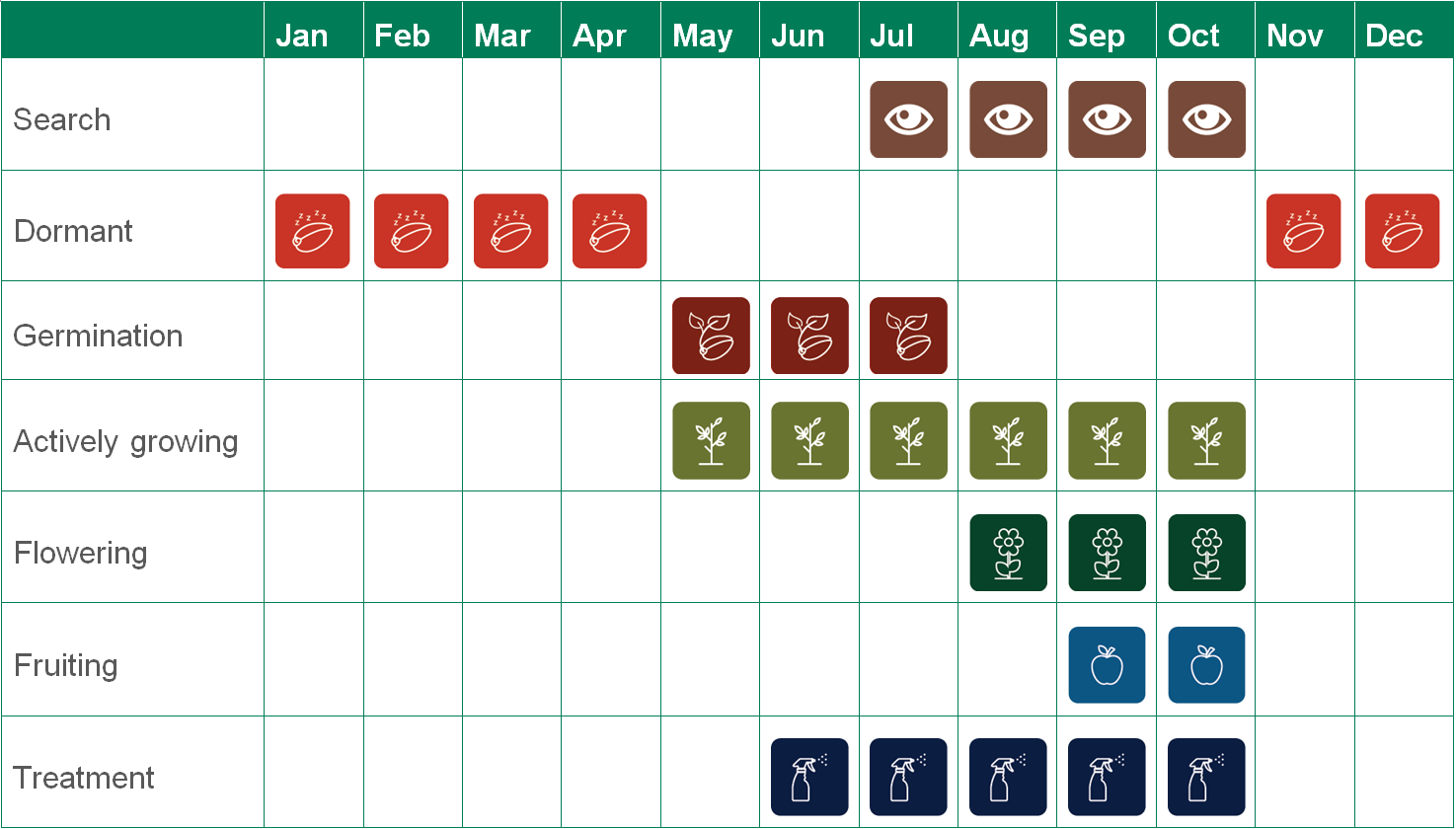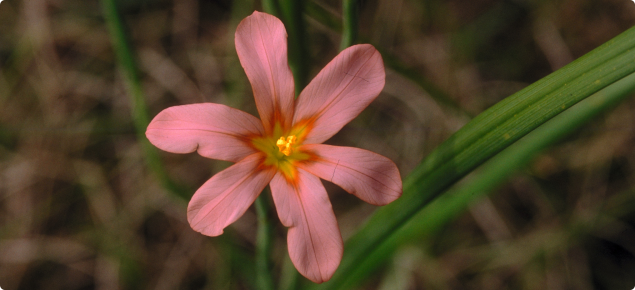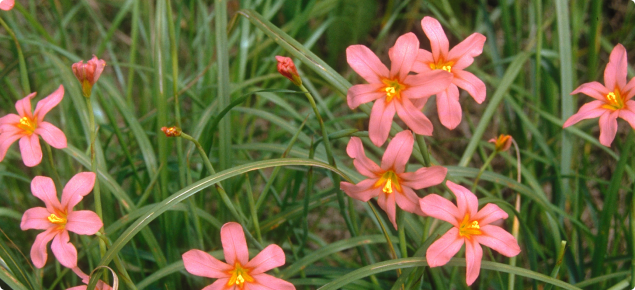Form: herbaceous — perennial
Status: present in WA
One-leaf Cape tulip (Moraea flaccida, previously Homeria flaccida) is a native of South Africa.
Appearance
Perennial herb to 70 centimetres high, distinguished by fibrous-sheathed corm at the base of the plant, orange to salmon pink flowers that are yellow in the centre; single leaves and presence of seeds in capsules. Corms one to four centimetres wide, developing new corms each year. Spread by seed and movement of corms. Often found in hay cut from infested paddocks.
Leaves: leaf folded, ribbed, linear, to one metre long, extended and drooping above the flowers.
Flowers: borne on branched stems, orange to salmon-pink, occasionally yellow. Flowers with six petals, each 2.6–4 centimetres long, not joined to each other. Flowers in spring when two or three years old.
Seeds: angular red brown seeds, about two millimetres long, in narrow-cylindrical capsules 2.5–5 centimetres long, splitting from the apex into three parts.
Originally introduced as a garden plant in the 19th century. Seeds germinate in autumn and plants regrow from corms at the same time. Poisonous to stock but generally avoided by them. Young stock may be affected if there is no alternative grazing available. One-leaf cape tulip is a serious pasture weed in Western Australia, South Australia and Victoria.
Online weed identification training
Login or set up a new account on DPIRDs online training site to access:
- a training course on how to identify Cape tulip and report it.
- training material that you can use to teach community groups how to identify Cape tulip.
Agricultural and economic impact
Cape tulip is extremely toxic. Cattle are most commonly affected. Symptoms of poisoning include: loss of appetite, abdominal pain, stiffness of the hind legs, diarrhea, general depression and weakness that may advance to convulsions or paralysis. Sheep are rarely affected but are susceptible. About one kilogram of fresh leaf is enough to cause death overnight. Dry cape tulip remains toxic in hay. There is no readily available treatment for poisoning.
Declared pest category
The Western Australian Organism List (WAOL) contains information on the area(s) in which this pest is declared and the control and keeping categories to which it has been assigned in Western Australia (WA). Search for one-leaf Cape tulip in the WAOLp. using the scientific name Moraea flaccida.
Requirements for land owners/occupiers and other persons
Requirements for land owners/occupiers and other persons if this pest is found can be sourced through the declared plant requirements link.
Search > detect > report
| MyPestGuide™ Reporter | Pest and Disease Information Service (PaDIS) |
Detectability: easy to find. One leaf Cape tulip is very distinctive when flowering, but can be confused with two leaf Cape tulip. As its name suggests, one leaf Cape tulip plants only have a single leaf, one to two centimetres wide and up to one metre long. The flowers have a yellow centre and six orange petals up to four centimetres long. Occasionally plants with plain yellow flowers are found. One leaf Cape tulip produces seeds in narrow capsules (seed pods) 2.5–5 centimetres long. The corms (bulbs) are up to four centimetres across and have a fibrous brown covering.
Who is likely to find it: potentially any landholder in the South West Land Division, though one leaf Cape tulip is most common in the Avon and Swan Valleys and the Upper Great Southern.
When to find it: most likely to be found in spring when it is flowering.
Where to find it: in pastures and remnant bushland, and on roadsides.
Control method
Control methods for this declared plant can be found through the one-leaf Cape tulip control link.
Management calendar
Further details
Further details on this declared plant can be found in the link Cape tulip: what you should know.




